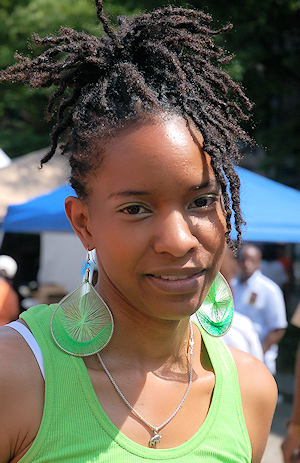
And depending on who you ask, the answer will vary. I’ve seen many people pit one method against another but I’m not going to do that because it’s unnecessary.
You see, there are no “best overall methods” so what you really need or want to ask yourself is…
“Which method is best for ME?”
It’s like the lyrics to an old “80’s” sitcom jingle said, “…what might be right for you may not be right for some… It takes different strokes to move the world”
So how do you determine the right method for YOU? There are some factors that you want to take into consider:
Lifestyle – daily activities that may affect your hair such as frequent working out, swimming, sweating, etc.
Hair length – is your hair long or short starting out
Hair texture – is your hair extremely soft and curly, wavy or straight or is it more coarse with tighter curls or coils
Personal aesthetics – do you want your locs to be well-manicured or do you not mind if they are more on the “wild” side
Once you’ve determined those things, then you can now go back and take a look at the various methods and choose the one that will fit best with your personal needs.
So, let’s take a look at 6 of the most popular methods of locking so you can do just that:
1.Comb coils – This method is very popular on hair that is too short to braid or 2-strand twist. One single-strand twist is made in small to medium sections of the hair using a locking product. The hair may take longer to lock and more maintenance due to the fact that the coils unravel a lot during shampooing. The only drawback to this method is that in the beginning stages, the twists tend to unravel and at certain points, the locks can begin to look very fuzzy and wild and although this is a part of the process, many people cannot and/or do not want to deal with those stages. But, I’ve seen many beautiful heads of locks as a result of this method.
2. Two-strand twists – Most lock-wearers choose this route to start their locks. The hair is sectioned and twisted with two strands of hair as opposed to one. These tend to hold up better than the previous method. The twists look very nice when first done and as the locks mature, they produce beautiful locks.
3. Braids – Braiding the hair in small to medium plaits is another way to start locs. Smaller braids allow for a LOT of styling versatility. This method is excellent for those whose hair may not hold up too well in coils or twists or those who desire to be able to shampoo their hair sooner than usually recommended with 2-strand twists.
4. Interlocking – There are various ways to lock the hair using “tools” such as a latch hook, crochet needle, etc. These methods generally hold up better than other methods although they can still unravel, but nowhere near as easily as other methods. This is a great method for those who may have relaxed ends or straighter textures of hair, period although it can be done on any texture of hair.
5. Organic/Natural – With organic locks, you would start off with all natural hair, usually short to medium length. Your hair would be shampooed regularly and left alone. There is no twisting or separating of the hair whatsoever. With this method, the hair is simply allowed to do what it naturally wants to do with little or no help/guidance from the wearer. While locking in itself can cause people to be looked upon in a negative or questionable light; it is the person who sports organic locs who probably receives the most flack of all loc-wearers.
6. Freeform – Free-form locks are somewhat similar to organic with one difference…the new growth of the locks is separated so that they do not combine together and they have a somewhat neater appearance than the organic locks. There is still no rolling, twisting or tightening of the new growth or loc…the hair is pretty much allowed to do what it wants to do with the exception of “marrying” or joining together.
So based on this knowledge, you can now make a decision for what method of locking would be best for you but again, what’s best for YOU is not best for all…there is no “best overall method” of starting locs. If you still have questions, you may wish to schedule a consultation with up to 3 (don’t take any one person’s word for it) Lociticians in your area for opinions. But ultimately, the decision on what will work best for you, is up to you!
Cherie M. King is a contributing author for http://going-natural.com. Her book are available at www.NaturalHairCareBooks.com
 Going Natural Hair Care for Black Women, African American Men and Children
Going Natural Hair Care for Black Women, African American Men and Children




